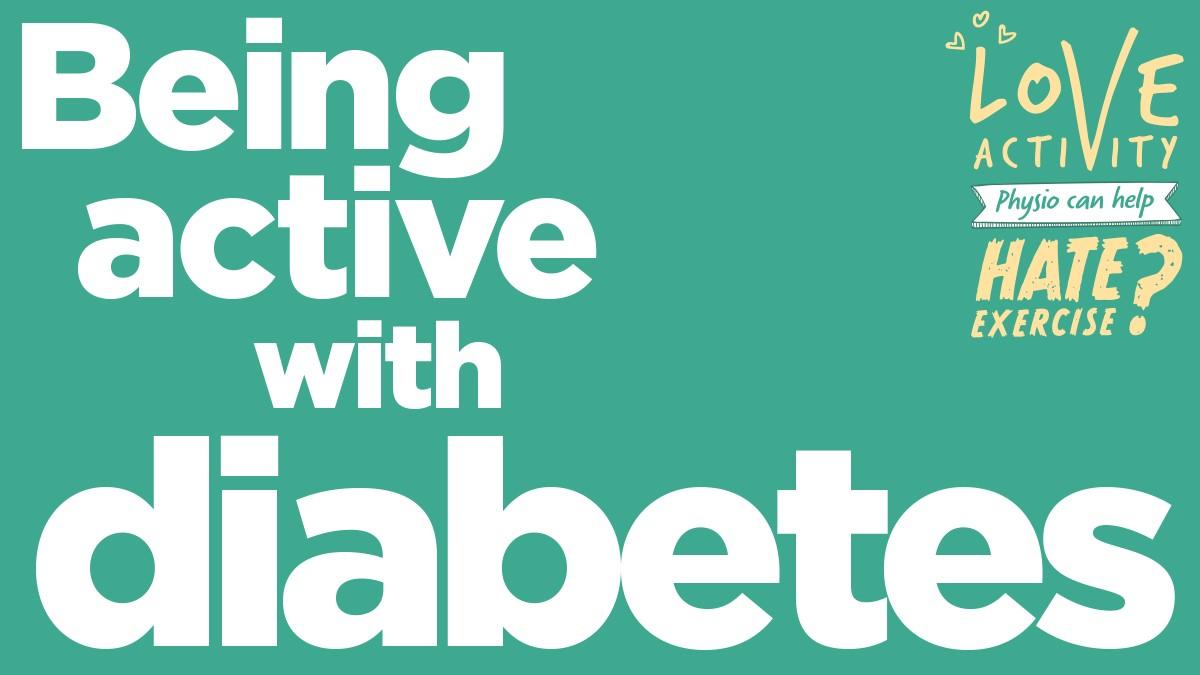Being active makes your body more sensitive to insulin, helps control blood sugar levels and lowers your risk of heart disease and nerve damage.

To avoid potential problems, you should check your blood sugar before, during and after exercise.
- Aim for 30 minutes of moderate-to-vigorous intensity aerobic exercise at least 5 days a week or a total of 150 minutes per week. Spread your activity out over at least 3 days during the week and try not to go more than 2 days in a row without exercising. Use My Activity planner to plan and keep track of your progress
If you’re starting out, begin with 5 or 10 minutes a day, and increase your sessions by a few minutes each week. Try taking a brisk 10 minute walk after each meal, for example
- Aerobic activities such as brisk walking, cycling, dancing, swimming, tennis and running are all good options, so why not try something new? You’ll knowyou're working at a moderate intensity if you can still talk, but can't sing the words to a song
- If you need to lose weight to help manage type 2 diabetes, then you may benefit from doing high-intensity interval training or HIIT. This combines low-to-moderate intensity intervals with high-intensity intervals, and can be applied to exercises such as running or cycling
- Making activity social can be a great way of sticking to it regularly. You could start a walking club, get gardening, play tennis or join a dance class

- For diabetes, greater health benefits are gained from doing a combination of aerobic and resistance training with weights, because resistance training makes your body more sensitive to insulin and can lower blood glucose
- Aim to do activity which improves muscle strength on at least two days per week. You could try signing up to a gym class that involves strength training, or start by lifting light weights like canned goods or water bottles at home
- You don’t just have to lift weights to build muscles; exercises such as sit-ups, lunges, planks and pull-ups will also be beneficial, and can even be done at home
If you’re still not sure where to start, a physiotherapist can assess you and work with you to create a weekly activity plan
You can download this page for future reference.
Being active with diabetes
Find Out More
Last reviewed:



